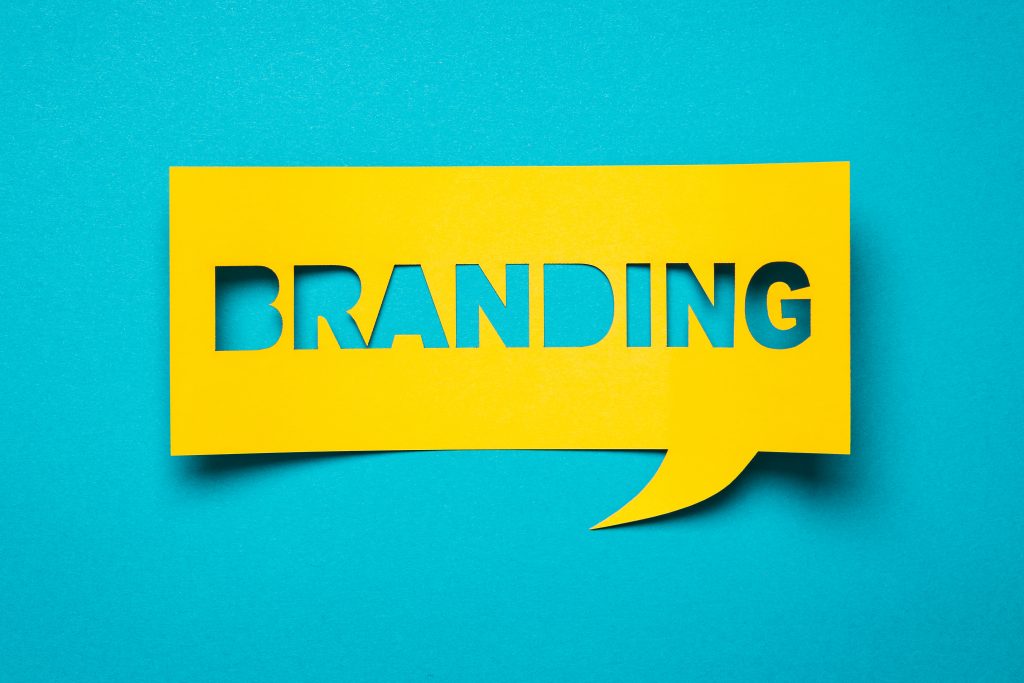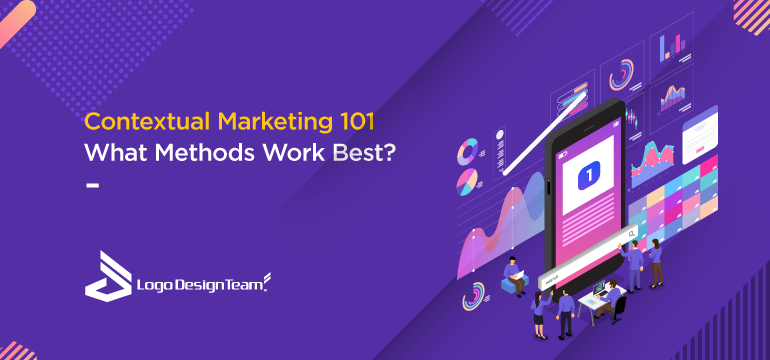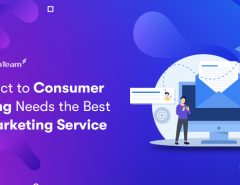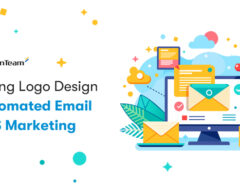Contextual Marketing is one of the best ways to utilize the typical behaviors of people online looking for content and turning it into a profitable revenue stream. To use the power of contextual marketing, it’s essential first to understand what it is and which methods work the best. The ultimate goal in your contextual marketing strategy should be to focus on your branding. This involves having a great logo, digital assets and brand elements that draw and engage your target audience.
What Is Contextual Marketing Really?
Let’s start with a definition. Contextual marketing is a form of online marketing by which people are served with advertising based on search terms that they used from recent browsing history and preferences. These types of ads are more natural forms of advertising that appeal to people because of their text-based and news formats, rather than taking a sales approach.
Where Do You Find It Most?
You’ll find contextual marketing in a variety of places online (see graphic below on how it works) but the most common areas to see it is on high authority websites and blogs. It is also prevalent in some business sites. This is because business owners know that it will improve their conversion rates by placing these types of ads on their pages.

What Are The Benefits Of Contextual Marketing?
The most significant advantage of this type of online marketing model is that you will appeal to people that you wouldn’t appeal to usually. People have learned to tune out the ads and the hard sales pitches because they are overwhelmed by them through email marketing, social media, and other means. So getting and keeping their attention may not be as easy as you think.
Also, using these types of ads let you utilize the system that is already in place (search engines) to serve up the content that people search for. This increases your click-through and conversion rate significantly.
So the most significant advantage of using contextual advertising is to increase your ROI and conversion rates.
Using Behavior Targeting
The bottom line of correctly using contextual marketing is to use behavioral targeting. Behavior targeting is what I like to call a marketing “psyops” (psychological operation). In the military and intelligence circles, psychological warfare is used to influence people to act in a certain way or to motivate them to do something.
Behavioral marketing is an approach where the consumers are targeted based on their behavior on websites. It is that process where marketers serve ads to the predefined segments or categories. A user might visit category pages on a particular site. The person receives a run-of-site or (ROS) placement. But you must understand that the user’s behavior is the key and not the placement.
It’s important to note that the behavior that you are shooting for needs to be a behavior that is self-motivated. People should also not be aware that you are using specific factors to influence them. This technique has been used in advertising for a long time.
With contextual advertising, you influence behavior by focusing on serving up what people want. The gathering of information (intel) is the key to being able to control the behaviors that you are targeting. You need to have the technology behind your contextual inserts to justify your strategy to be the most successful.
These are sometimes also called “native ads,” and many of them feature news stories related directly to the searches a reader is performing. Remember, though that, the best strategy is to show news-based and informational content at first after a search. Then, once they see this content, they will be presented with related ads that they will click on for more information.

The Keys to Success
The keys to success with contextual ads are to have an ad network in place that allows you to offer products and services to customers who are already searching for a specific category. The two major platforms for creating contextual ads are Google AdSense and Media.net. Media.net is owned by a company associated with Bing (Microsoft). You can join either or both of these networks to handle your customized ads.
Creating a contextual ad to develop sales funnel to your site is a good idea if you want to create digital content that resonates with your most valued potential customers.
Once you create your contextual ads, you will want to create a monetization format so that you can put your ads in front of the people who are looking for the content that you are serving up.
Branding vs. Marketing
One differentiation that should be made is the difference between branding and marketing. Marketing is the process of promoting your goods and services and putting them in front of the people who are most likely to purchase them. Branding is the idea of promoting your entire brand. There is a world of difference between these two concepts.
When creating contextual marketing ads, you may want to develop both a marketing plan and a branding plan that will integrate your branding ideas into your products and services in a way that brings it all together.
One way that you can do this is to create some tremendous digital assets so that, once people follow your sales funnel with the contextual advertising you’ve developed, they will land on your website or blog and discover your brand, as well.
After all, isn’t this your ultimate goal? Without branding your company, people may never make a connection between our products or services and your brand name.
As the great Will Shakespeare once said, “What’s in a name?” Even William Shakespeare knew that his statement had a double meaning when he put this line in his famous play, “Romeo & Juliet.” He knew that, in an ideal world, a name shouldn’t matter. But in the real world, it does.
In fact, there is nothing worse than a bad name and nothing better than a good name when it comes to creating a brand that will work for you and your business.
How Your Logo Fits In
So now that we’ve talked about branding, no discussion on this topic would be complete without a review of your business logo. Your logo is perhaps the most critical factor in your marketing and branding plan.
How does your logo look? If it seems like it could use a little help, you could look into logo repair. This is a service that we offer at logodesignteam.com. Look at some examples of our logo repair and decide for yourself if it’s something you could use.
Remember that logo repair is not as involved as complete logo creation. We can make some changes to your logo with logo repair that are less complex than what we do with full logo design, and it won’t cost as much, either.
Talk to us about logo repair or logo design by contacting us via our website. Be sure to read our blog, as well to take a look at what else we can offer you when it comes to helping your branding and marketing plans.
If you want to include contextual marketing on your website or blog, please mention this to us when you place an order to ask for your free quote. We may be able to offer you some advice on how to think about your branding and we can put this into your logo, as well so that it will work better for your brand and marketing strategies.





